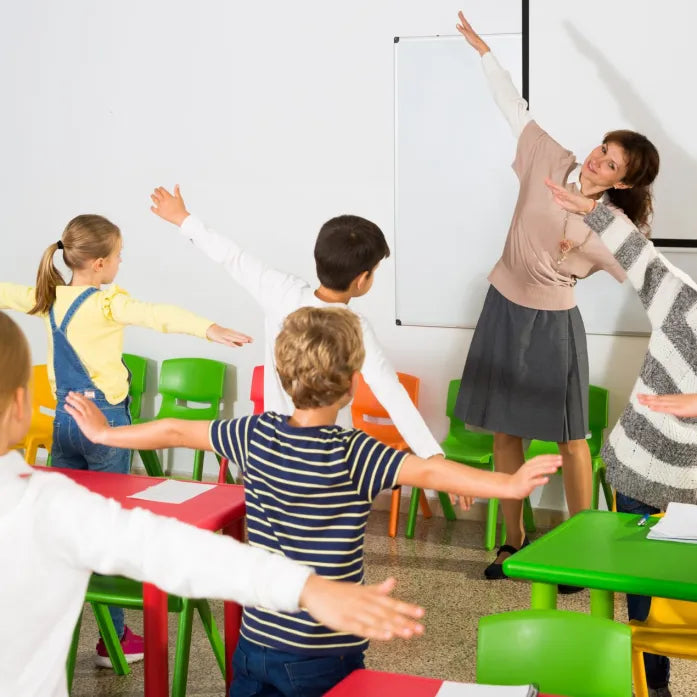
How to Create an Active Classroom That Keeps Kids Engaged
Share
Sitting still for hours can be tough for kids — and let’s face it, it’s not great for learning either. Research shows movement improves focus, memory, and even behavior in students. That’s why creating an active classroom is one of the best ways to boost energy, participation, and joy in learning.
At The Best Group Games, we’re all about turning movement into meaningful play. Here’s how to bring more activity into your classroom — and the gear that makes it easy.
Why an Active Classroom Works
- Improves focus: Short movement breaks help kids reset and return to lessons ready to learn.
- Encourages collaboration: Active games build teamwork and strengthen peer relationships.
- Promotes health: A few minutes of physical activity throughout the day adds up to better overall fitness.
- Reduces stress: Fun, active play helps students manage anxiety and boosts mood.
6 Simple Ways to Add Movement to Your Active Classroom
1. Parachute Games
Parachutes work indoors too. Quick games like “popcorn” (bouncing lightweight balls) or “color calls” (lifting on a color cue) are perfect brain breaks. Even if you don’t have a parachute, large sheets or fabric can substitute.
2. Station Challenges with Cones
Cones are versatile for marking boundaries or creating obstacle courses. Use them to set up stations where students rotate through challenges or answer review questions between lessons.
3. Disc It
Disc It is soft-edged and safe for indoor play. It works great for quick toss-and-catch games or target challenges that help kids reset between lessons.
4. You.Fo
You.Fo adds a fresh twist to classroom breaks. Kids throw and catch rings using sticks, improving coordination and focus without needing much space.
5. 9 Square in the Air
9 Square in the Air isn’t just for playgrounds. Set it up in a gym or multi-purpose room to get students moving and working together as they volley a ball through squares overhead.
6. Gaga Ball
Gaga Ball is perfect if your school has a portable pit or gym space. It’s fast-paced, inclusive, and gets every student involved — even those who aren’t into traditional team sports. Short games make it easy to rotate students through during classroom brain breaks or indoor recess.

Tips for Managing an Active Classroom
- Set clear boundaries: Use tape or natural classroom zones to keep movement controlled.
- Keep activities short: 2–5 minutes is enough to re-energize students without losing focus.
- Blend learning and play: Incorporate math facts, spelling words, or review questions into movement.
- Rotate activities: Change up games weekly to keep students excited.
The Bottom Line
An active classroom isn’t noisy chaos — it’s a smarter way to teach. By blending movement with learning, teachers boost focus, teamwork, and joy in the classroom.
Explore The Best Group Games for Disc It, You.Fo, 9 Square in the Air, Gaga Ball, and other gear that helps turn everyday lessons into active learning experiences.
